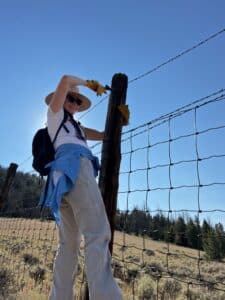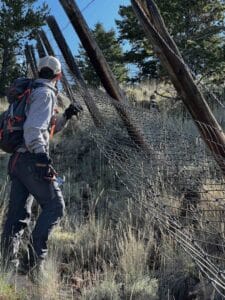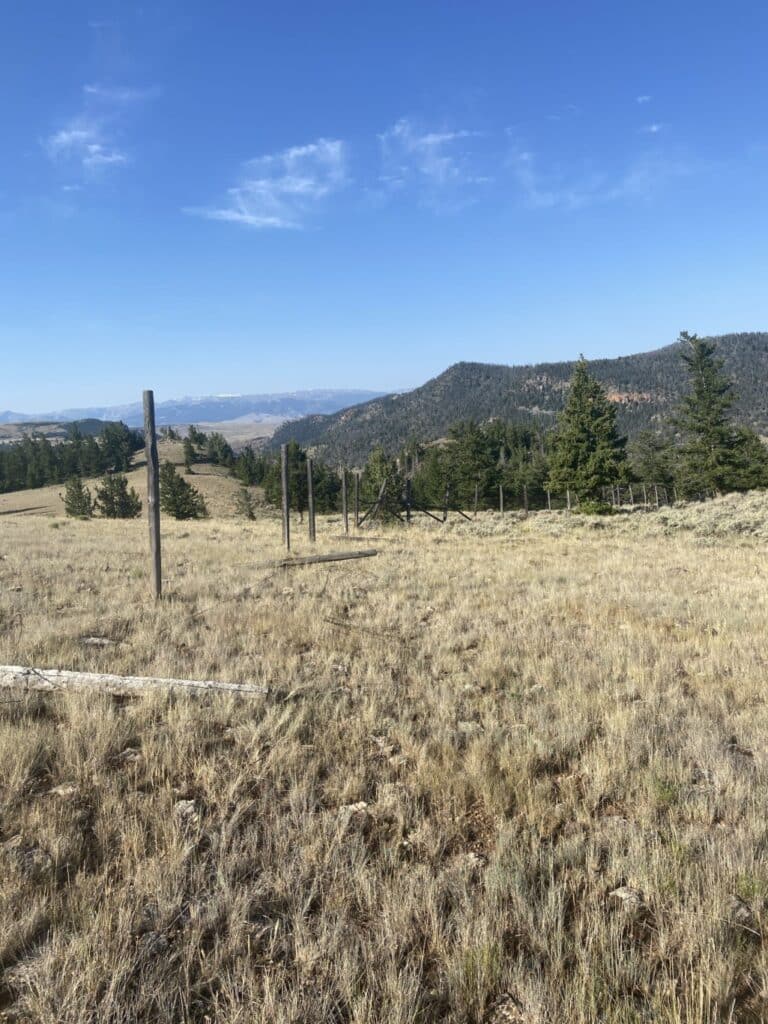On July 30th, volunteers circled the wagons near Elk Ridge in the Spence-Moriarty Wildlife Habitat Management Area.
The task? Remove eight-foot tall elk fence from 9,000 feet in elevation so deer, pronghorn, and elk can travel across the landscape there.

This six-tenths of a mile section was difficult to get to and was adjacent to the Shoshone National Forest. The fence consisted of six-foot-tall woven wire with three strands of barbed wire on top, making the fence eight feet tall. Volunteers climbed the woven wire to get the staples out of the top wires before they could get to the lower reachable ones. There were 21 staples in each post and about a post every six feet. This fence was made to last and it certainly had for many decades.
Unfortunately, that fence that was built to last no longer had a purpose given it was not needed to keep elk off of the Fish and Wildlife Service lands anymore. Instead it was an almost prison-like barrier for animals traveling and traversing that part of the country. The land was steep-pitched, forested hills with open patches of grass in a mosaic often seen in the high country.

With the aid of almost 20 volunteers we took out staples, we rolled barbed wire, folded the woven wire after cutting it into sections, and hauled the metal and wire to the trucks. It was a laborious yet gratifying day of work. The pictures show the incredible landscape this fence was on, what it took to get the fence down, and a before and after look of a fence no longer an obstruction to migrating animals big and small.
This was an absolute feel-good project that took sweat, muscle, determination, and a solid team effort to pull off. I will say there was also likely not one single person who didn’t go away from the project without a cut, blister or bruise evidence of a hard day’s work. Thank you to all of the partners and volunteers who made this project a success.
This project was in partnership with the Wyoming Wildlife Federation, Rocky Mountain Elk Foundation’s Red Canyon Chapter, Bowhunters of Wyoming, Wyoming Game and Fish Department’s Lander field office, and Shoshone National Forest.

